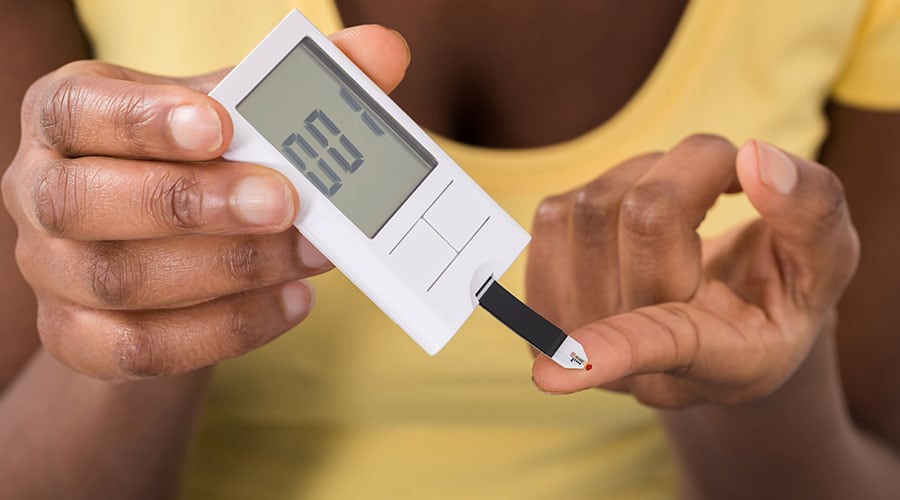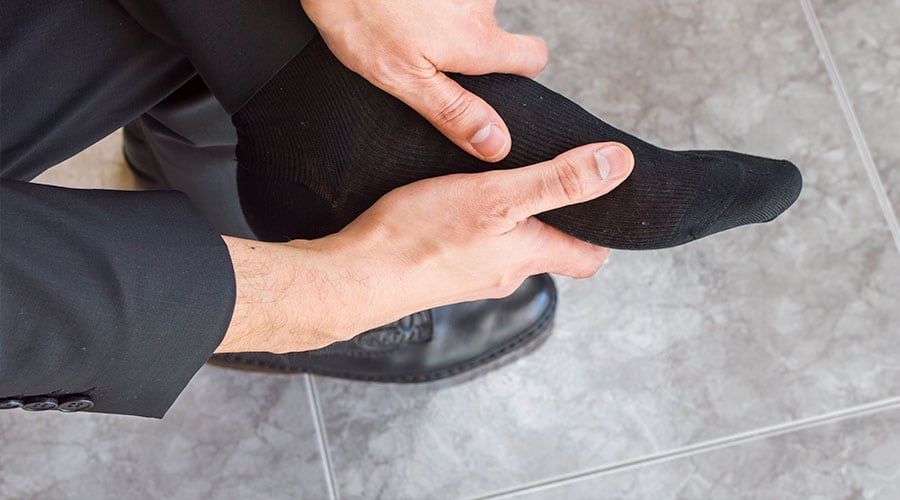Living With Diabetes: What You Need to Know
Diabetes Can Mean Watching Your Diet
People with diabetes often find that changing their diet is the biggest change they have to make. And as far as diet is concerned, what someone eats is just as important as how much.
For those who have diabetes, sugar is generally the enemy. Watching your sugar intake matters because eating less sugar can mean lower blood sugars and a higher chance at being healthier for the long term. Keep in mind that many processed foods have high levels of sugar, and that simple carbohydrates quickly turn to sugar in the body. Both of these should be avoided or moderated, as should fruit. Even though fruit is healthy, it can raise blood sugar levels in people who are diabetic and put them at risk for problems related to their diabetes. Keeping your sugar and carb intake low is a great way to reduce your health risks.
A lot of diabetics who are serious about changing their diet cut out deserts and sugary drinks, and they read labels carefully and cook more things from scratch. These are all great ways to reduce how much sugar you’re getting in your diet, which can make a big difference in how healthy you remain. Diabetes can become harder to control over time, but if you start early and are diligent about it, you may avoid many of the blood sugar control issues that can appear later in life in diabetic patients who have not been careful about their diet or their weight over the course of their lives.

Getting Moving Can Reduce Health Problems
Along with diet, staying active is an important component of living with diabetes. It can be hard to exercise, especially at first. You may be overweight, or you may just not feel well because of other health issues. Even so, getting moving is still well worth overcoming any initial challenges. If you stay consistent and push past those first few days or weeks, you’ll likely find that you start feeling better, your weight comes down, and your blood sugar also becomes more stable. That is a great way to feel better about yourself, and also to start managing your condition so you can be healthier overall.
You should talk to your doctor first, though, because you don’t want to exercise too heavily or do anything that might make you sick or cause your blood sugar to spike or drop too low. By working with your doctor and starting out on an exercise regimen that is best for your and your specific needs, you can get healthier and potentially reduce the need for the level of insulin you currently take. Not everyone who is diabetic will be able to stop taking medication, especially if they have Type I diabetes, but any reduction in medication and lowering of blood sugar levels can be helpful when it comes to living a healthier life.

Don’t Forget to Check Your Sugar
Checking your blood sugar is among the most important things you can be doing if you have diabetes. Whether you have Type I or Type II, they both cause your blood sugar to rise to unhealthy levels. That can be controlled with insulin or other types of medication, but you can’t control it successfully if you don’t know what you’re working with. For some people, checking their sugar once per week and keeping an eye on what they’re eating is enough. For others, their sugar must be checked multiple times per day and they need a tightly controlled diet in order to keep their sugar levels under relatively decent control.
Generally, most people with diabetes fall somewhere in between these two extremes, and will need to monitor themselves fairly closely. If you see that what you’re doing isn’t keeping your blood sugar in a good range, talking with your doctor about adjusting your medication may be in order. Just don’t make changes on your own unless your doctor has already okayed specific types of changes. Otherwise you could be putting your short-term and long-term health at significant risk. High blood sugar is dangerous, but so is having your blood sugar drop too low, especially if it happens while driving or doing something active.

Foot Problems Are Common in Diabetics
People who have diabetes are at greater risk for problems with their feet. These problems generally manifest themselves as sores that have trouble healing. Once a sore like this gets started on your foot, getting rid of it and ensuring that your feet are healthy and clean can be much harder. In some cases, gangrene or other types of infection can become a significant problem, leading to the need to amputate the foot or part of the foot. Naturally, this is something that diabetics should strive to avoid. While it may not always be possible to avoid foot complications, there are some things you can do to reduce your risk.
Keeping your feet clean and dry, checking them frequently for sores or other problems, and wearing the right shoes and socks can all make a difference. There are socks specifically made for diabetic patients that provide good support but don’t cause rubbing and chafing that can lead to sores and other types of discomfort. These socks aren’t required, but they can help. If you prefer to wear more standard socks, make sure the elastic isn’t too tight, that the socks are made of breathable materials, and that you change them frequently, especially if they get wet or damp.
Shoes are very important, too, as you want your shoes to be breathable just like your socks. While open-toed options aren’t always the best because they can raise the risk of injury to your foot, closed-toed choices that are too restrictive can also be problematic. You may have to pay a little more if you select shoes that are designed for diabetics, but you’ll also get more peace of mind about taking care of your feet. Don’t underestimate the discomfort a shoe that is rubbing on your foot can cause. If you focus on shoes that are airy and breathable, but that still fit you well and don’t slide around, you’ll have the best chance of protecting your feet.

Talking With Your Doctor Can Help
As with any chronic medical condition, talking with your doctor can make a big difference. You want to be sure you’re protecting yourself, and your doctor is the one who can tell you if you’re doing the right things or not. Even if your blood sugar is testing well when you check it at home, make sure your doctor is doing an A1c test on you at reasonable intervals. That way you can get a baseline of how your sugar levels are over time, and whether they are well-controlled. If your control of your sugar levels isn’t good over time, that can lead you to have more health problems even if you’re trying to do all the right things.
Getting your A1c checked gives you an idea of whether there are still changes that you need to make, and if your doctor has ideas about what can be done to protect you in the future. The chances are high that you may eventually need a medication change or increase, and finding that out can lead you toward regaining better control of your blood sugar levels. Then you can reduce your worries and enjoy your life without the fear that your diabetes may worsen or your blood sugar levels may hold you back in any way. Even though it’s not always easy to manage diabetes, doing so can add both years to your life and life to your years, so make sure you control your sugar the right way for the long term.

About Diabetes
- Diabetes and Family History: How Much Risk is Genetic?
- Gestational Diabetes: What Is It, and What Causes It?
- Diabetes Symptoms, Diagnosis, & Testing
Diabetes Administration
- Diabetes Treatment and Care
- Diabetes: A School Guide for Effective Blood Sugar Management
- Diabetes: The Value of Just One Step
Diabetes Resources
Didn't Find the Answer You Were Looking For?
Find Affordable Diabetes Plans in Your Area
© 2017 YourDiabetesInfo.com All rights reserved.



